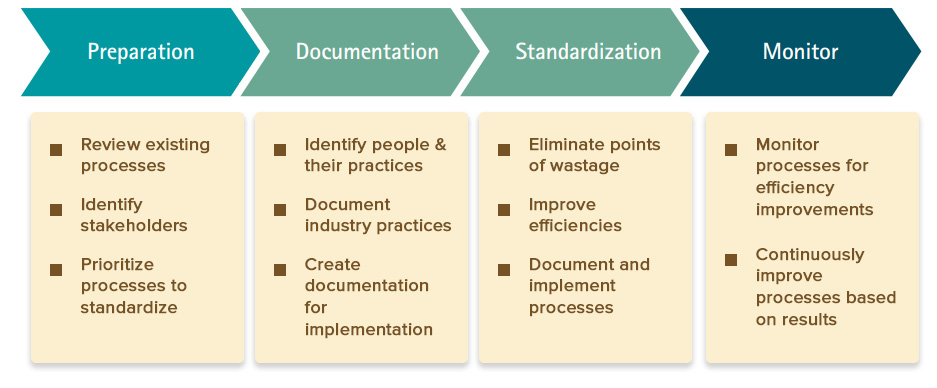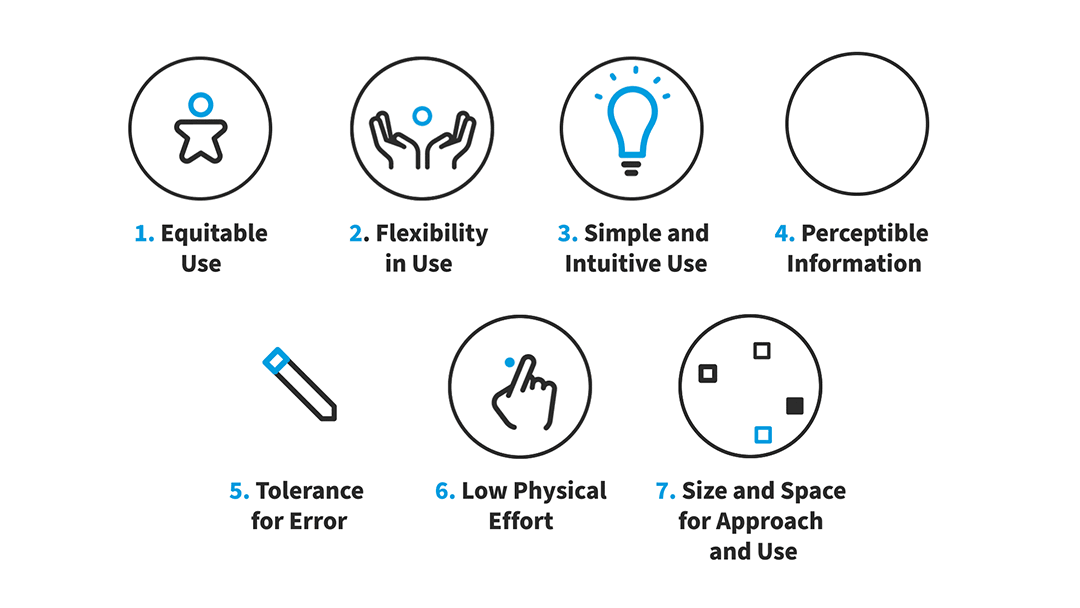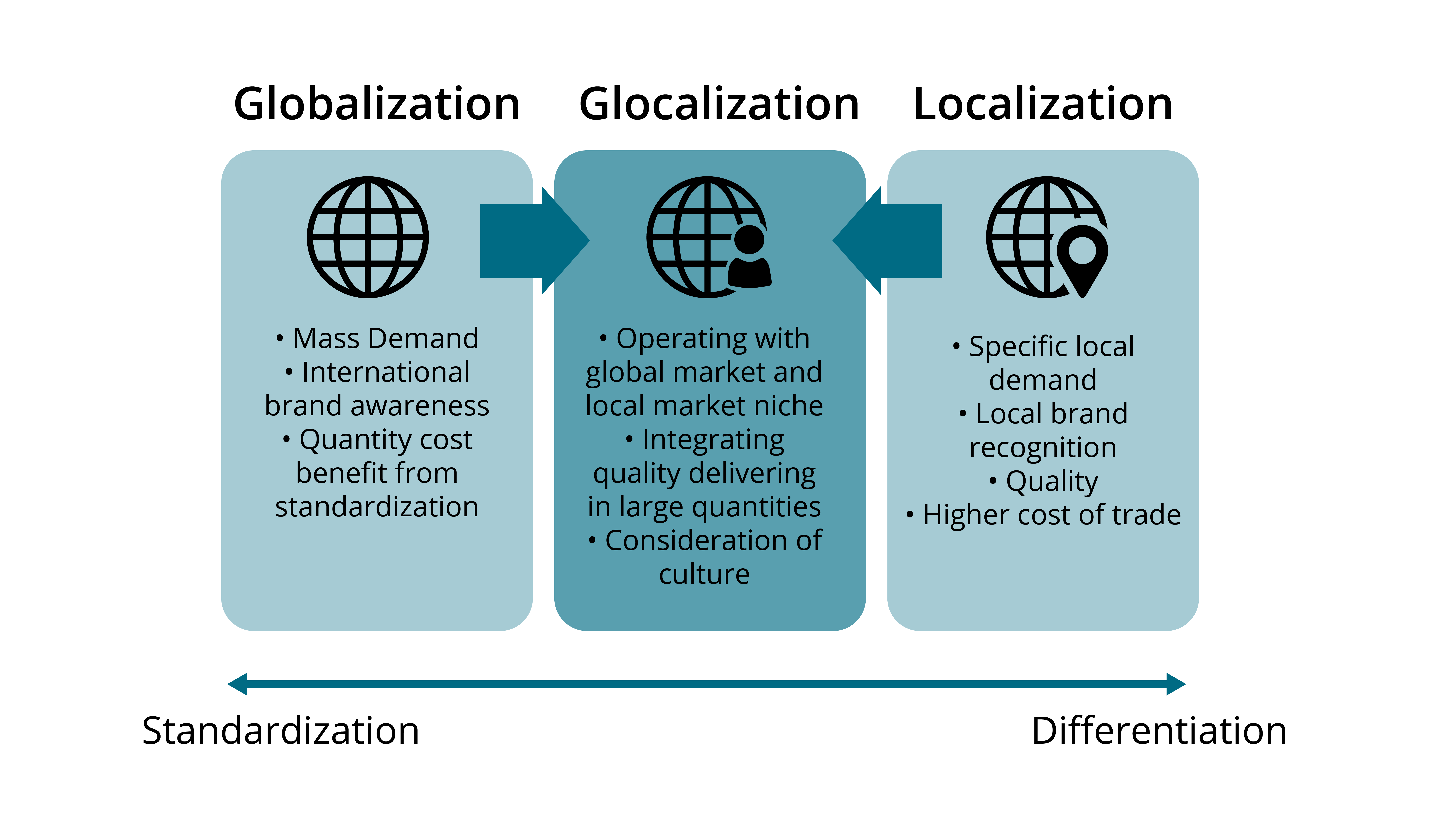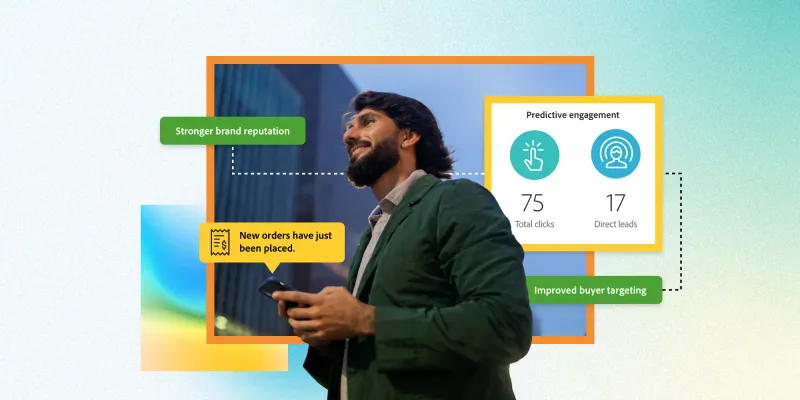Despite what the industry hype might have you believe, personalization isn't always the holy grail of customer engagement. In fact, sometimes a more generic, universal approach can be just as powerful – if not more so.
I know, I know – this probably goes against everything you've been taught. As a marketing consultant for over a decade, I've certainly seen my fair share of personalization initiatives. And don't get me wrong, there's definitely a time and place for tailored experiences. But I've also seen the magic that can happen when brands focus on creating a more inclusive, adaptable customer experience – one that appeals to the shared hopes, dreams, and challenges that connect us all as human beings.
In this post, I want to share some of the counterintuitive lessons I've learned about the power of genericism in my two decades working with brands across all industries. I'll dive into the psychological reasons why a more open-ended experience can actually drive deeper engagement, the business benefits of a more streamlined approach, and the key principles for designing customer experiences that are both universal and deeply resonant.

The Personalization Paradox
On the surface, personalization makes perfect sense. By tailoring our offerings to the specific needs and preferences of individual customers, we should be able to create more relevant, valuable experiences that drive deeper engagement and loyalty. And indeed, there are countless examples of personalization done well – from Netflix's uncannily accurate viewing recommendations to Amazon's seamless “1-Click” ordering.
| Personalization Pitfall | Example | Potential Impact |
|---|---|---|
| Over-targeting | Showing ads for products a customer has already purchased | Annoyance, mistrust |
| Inconsistent experiences | Different recommendations across devices or channels | Confusion, frustration |
| Lack of transparency | Using data without clear consent or explanation | Privacy concerns, backlash |
But there's a dark side to personalization that often goes unnoticed. In our rush to target ever-narrower segments of customers, we risk creating a fragmented, inconsistent brand experience that actually undermines engagement. When every customer sees a different version of our brand, tailored to their individual profile, it becomes harder to build a coherent, recognizable identity that stands for something bigger than any one person.
What's more, by pigeonholing customers based on past behaviors and preferences, we risk limiting their ability to discover new things and expand their horizons. We create echo chambers of content and offers that reinforce existing biases and preferences, rather than challenging customers to grow and evolve. Over time, this can lead to stagnation and disengagement, as customers feel trapped in a narrow, pre-determined version of themselves.
There are plenty of cautionary tales of personalization gone wrong. Consider the case of Target, which infamously used purchase data to predict which customers were pregnant – and then sent them targeted ads for baby products, much to their surprise and discomfort. Or the many instances of “creepy” retargeting ads that follow customers around the web, serving up products they've already bought or decided against.
In each case, the pursuit of personalization crossed a line from helpful to intrusive, alienating customers and damaging brand trust. It's a reminder that just because we can personalize an experience doesn't always mean we should – and that sometimes, a more generic approach can actually be more effective.

Cognitive Fluency of Well-Designed Generic Experiences
So what exactly do we mean by a “generic” customer experience? It's not about being bland, boring, or one-size-fits-all. Rather, it's about creating an experience that is open-ended, versatile, and adaptable – one that allows customers to project their own meanings and interpretations onto the brand.
Think about some of the most iconic, enduring brands in the world – Apple, IKEA, Starbucks. What do they have in common? They all offer a relatively standardized, consistent experience that nonetheless feels deeply personal and meaningful to each individual customer.
| Psychological Principle | Relevance to Generic Experiences | Brand Example |
|---|---|---|
| Self-expression | Allowing customers to project their own identities onto a brand | Apple's "Think Different" campaign |
| Sense of belonging | Creating a shared identity or community around a universal experience | Starbucks' "Third Place" concept |
| Cognitive fluency | Simplifying decision-making through streamlined, intuitive design | Uber's seamless ride-hailing experience |
Take Apple, for example. Its products are meticulously designed and rigorously tested to appeal to the widest possible audience. There's very little in the way of customization or personalization – every iPhone looks and works essentially the same. And yet, customers form incredibly deep, emotional attachments to their Apple devices, projecting their own identities and values onto the brand.
The same is true of IKEA. Its furniture is affordable, modular, and relatively generic – you won't find any one-of-a-kind, bespoke pieces. But that's exactly what makes it so appealing to so many people. The simplicity and adaptability of IKEA's designs allow customers to mix and match pieces to create their own unique living spaces, reflecting their individual tastes and lifestyles.
This is the power of a more generic customer experience – it creates a blank canvas that customers can paint with their own meanings and interpretations. It taps into the universal human desire for self-expression and creativity, inviting customers to co-create value with the brand.
From a psychological perspective, this approach leverages the power of projection – the tendency for people to see their own traits, beliefs, and values in others (or in this case, in brands). When a brand presents a more open-ended, adaptable identity, customers are more likely to see themselves reflected in it, leading to deeper emotional connections and loyalty.

The Business Case for Strategic Genericism
But the benefits of a more generic customer experience go beyond just psychology – there's also a strong business case for strategic genericism. By offering a more standardized, consistent experience, brands can streamline operations, reduce costs, and improve overall quality and reliability.
Think about the operational efficiencies that come from having a more limited, focused product lineup. Instead of trying to be everything to everyone, brands can focus on doing a few things really well, optimizing their supply chains and production processes for maximum efficiency and consistency. This not only reduces costs, but also ensures a higher level of quality control and brand integrity.
What's more, by appealing to a wider, more diverse range of customers, brands can tap into new markets and growth opportunities. A more generic experience is inherently more flexible and adaptable, able to resonate with different cultures, age groups, and lifestyles. This allows brands to expand their reach and build a broader, more resilient customer base.
Of course, this doesn't mean that personalization has no place in the customer experience. There will always be situations where a more targeted, individualized approach is warranted – particularly in high-touch, service-oriented industries. The key is to find the right balance between personalization and genericism, leveraging customer data and insights to inform overall experience design without over-targeting or alienating customers.

Designing for Universal Engagement
So how can brands create customer experiences that are both generic and deeply engaging? Here are a few key principles to keep in mind:
- Focus on universal human needs and aspirations. Instead of targeting narrow customer segments, focus on the broader, shared values and desires that unite us all. Create experiences that tap into universal themes like belonging, achievement, creativity, and self-expression.
- Build in customization options and personal touches. Just because an experience is generic doesn't mean it has to be one-size-fits-all. Look for opportunities to give customers control over their experience, whether through customization options, personalized recommendations, or user-generated content.
- Use storytelling and archetypes to create emotional resonance. Great brands are great storytellers, able to create narratives that resonate with customers on a deep, emotional level. Use classic archetypes and universal themes to create stories that transcend individual differences and forge lasting connections.
- Create a consistent, cohesive brand identity. While the customer experience may be generic, the brand identity should be anything but. Invest in creating a strong, distinctive brand personality and visual identity that customers can easily recognize and relate to across all touchpoints.
- Continuously gather feedback and optimize the experience. No customer experience is perfect from the start. Use a mix of quantitative and qualitative research methods to gather ongoing feedback from customers, and use those insights to continuously refine and improve the experience over time.
| Personalization | Genericism |
|---|---|
| Targeted to individual preferences | Appeals to universal human needs |
| Risks pigeonholing customers | Allows for customer co-creation |
| Can create fragmented brand experiences | Builds consistent brand identity |
| Higher operational costs and complexity | Streamlines operations and reduces costs |
| May alienate some customers | Has potential to reach wider audiences |
Ultimately, the goal is to create customer experiences that are both broadly appealing and deeply meaningful – experiences that invite customers to make them their own, while still maintaining a strong, recognizable brand identity.

Finding the Right Balance
Of course, embracing a more generic approach to customer experience doesn't mean abandoning personalization altogether. The most successful brands are those that find the right balance between the two, using customer data and insights to inform overall experience design while still leaving room for individual interpretation and customization.
| Approach | When to Use | Example |
|---|---|---|
| Personalization | High-stakes decisions, unique needs | Financial advice, medical treatment |
| Genericism | Broad appeal, efficiency gains | Fast food, budget travel |
| Hybrid | Balancing scale and specificity | Personalized recommendations within a standardized e-commerce experience |
The key is to be strategic about where and how you deploy personalization. Instead of trying to personalize every aspect of the customer experience, focus on the moments that matter most – the key touchpoints where a more targeted, individualized approach can have the greatest impact.
This might mean personalizing the initial onboarding experience for new customers, or providing tailored product recommendations based on past purchases. It might mean creating customized content or offers for high-value customers, or using geolocation data to provide location-specific information or services.
The goal is to use personalization as a tool to enhance the overall customer experience, rather than as an end in itself. By starting with a strong, generic foundation and then layering on personalized touches where they matter most, brands can create experiences that are both broadly appealing and deeply relevant to each individual customer.

Measuring Success
Of course, no discussion of customer experience would be complete without addressing the question of measurement. How can brands know if their generic experiences are actually driving engagement and loyalty?
The answer lies in a combination of quantitative and qualitative metrics. On the quantitative side, brands should track key engagement metrics like customer lifetime value, repeat purchase rate, and net promoter score. These metrics can provide a high-level view of how well the generic experience is resonating with customers over time.
But equally important are the qualitative insights that come from direct customer feedback. Brands should be proactive about gathering input from customers through surveys, focus groups, and other research methods. They should pay close attention to the language customers use to describe their experiences, looking for common themes and sentiments that can inform future improvements.
| Metric Type | Key Indicators | Measurement Techniques |
|---|---|---|
| Engagement | Time spent, interactions, repeat visits | Web analytics, app tracking |
| Loyalty | Repeat purchases, customer lifetime value | CRM data, cohort analysis |
| Advocacy | Net Promoter Score, social sharing | Surveys, social listening |
Ultimately, the true measure of success for any customer experience is the degree to which it creates value for both the customer and the brand. A generic experience that drives broad appeal and deep engagement is one that benefits everyone involved – customers get a more meaningful, relevant experience, while brands build lasting equity and loyalty.
It's easy to lose sight of the power of a more generic, inclusive approach to customer experience in a world of ever-increasing personalization. But as we've seen, there are compelling psychological, business, and strategic reasons to embrace a more universal, adaptable approach.
By focusing on shared human needs and aspirations, building in customization options and personal touches, and using storytelling and archetypes to create emotional resonance, brands can create experiences that are both broadly appealing and deeply engaging. And by finding the right balance between personalization and genericism, they can create a customer experience that is truly greater than the sum of its parts.
Of course, this approach requires a shift in mindset – a willingness to challenge conventional wisdom and embrace a more nuanced, balanced approach to customer engagement. But for brands that are willing to take the leap, the rewards can be significant. By creating experiences that invite customers to make them their own, brands can build lasting connections that transcend individual differences and drive long-term growth and success.
So the next time you're tempted to personalize every aspect of your customer experience, take a step back and consider the power of generic appeal. You may just find that less personalization can sometimes mean more customer engagement.
FAQ
1. What exactly do you mean by a “generic” customer experience?
A generic customer experience is one that is designed to appeal to a broad range of customers by tapping into universal human needs, desires, and behaviors. It is less focused on individual preferences and more on creating a shared, inclusive experience that allows for personal interpretation and co-creation.
2. Isn't personalization always better for driving engagement and loyalty?
Not necessarily. While personalization can be effective in certain contexts, it also risks alienating customers or creating inconsistent brand experiences. A well-designed generic experience can actually drive deeper engagement by allowing customers to project their own meanings and identities onto the brand.
3. Can you give an example of a brand that has successfully used a generic approach?
Apple is a great example of a brand that has built a loyal following through a relatively generic, standardized product and brand experience. By focusing on universal values like creativity, simplicity, and self-expression, Apple has created products that feel deeply personal to a wide range of customers.
4. How can I tell if a generic approach is right for my brand or industry?
Consider factors like your target audience, competitive landscape, and business goals. If you are targeting a broad, diverse customer base or looking to streamline operations and reduce costs, a more generic approach may be appropriate. However, if you are in a highly specialized or regulated industry, personalization may be more important.
5. What are some key principles for designing a generic customer experience?
Focus on simplicity, flexibility, and emotional resonance. Create experiences that are easy to navigate, adaptable to different contexts, and that tap into universal human desires and aspirations. Use storytelling and archetypes to create a shared narrative that customers can relate to.
6. How do I balance personalization and genericism in my customer experience?
The key is to be strategic and selective in your use of personalization. Identify the key moments in the customer journey where a more tailored approach can have the greatest impact, while maintaining a consistent, streamlined experience overall. Use customer data and insights to inform your design decisions, but don't over-target or invade privacy.
7. Can a generic experience still feel unique and differentiated?
Yes, absolutely. The goal of a generic experience is not to be bland or forgettable, but rather to create a strong, distinctive brand identity that resonates with a wide audience. By focusing on universal human truths and emotions, you can create an experience that feels both familiar and fresh.
8. How do I measure the success of a generic customer experience?
Use a mix of quantitative and qualitative metrics to track engagement, loyalty, and advocacy. Look at indicators like time spent, repeat visits, customer lifetime value, and net promoter score. Use surveys and customer feedback to understand how the experience is being perceived and identify areas for improvement.
9. What if my customers are asking for more personalization?
Listen to your customers and try to understand the underlying needs or desires behind their requests. In some cases, personalization may be the right solution. However, you may also be able to address their needs through a more generic experience that offers flexibility, customization options, or a sense of community.
10. How do I get buy-in from my team or leadership for a more generic approach?
Build a strong business case that highlights the potential benefits of a generic approach, such as increased operational efficiency, broader market appeal, and long-term brand equity. Use data and examples to show how a more streamlined, inclusive experience can drive engagement and loyalty. Emphasize the importance of finding the right balance and being strategic in your use of personalization.



